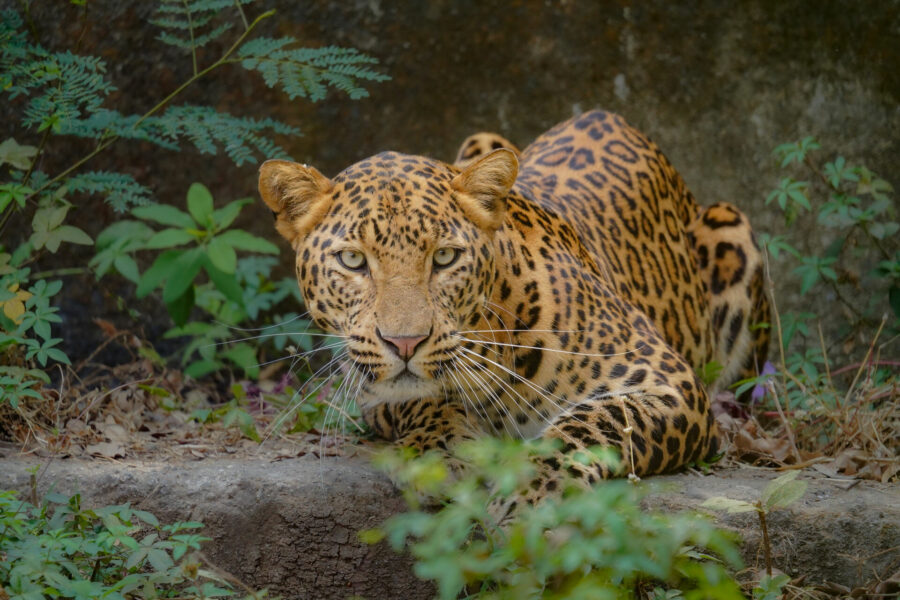Tigers have long symbolised strength and power, captivating us with their majestic presence. Beyond their cultural significance, they are a keystone species crucial to maintaining ecosystem health and supporting livelihoods. However, tigers are rapidly disappearing, with 93% of their historic range lost and remaining populations scattered across fragmented landscapes. They face severe threats from habitat destruction, human-wildlife conflicts, poaching, and wildlife trafficking. As apex predators, protecting tigers means preserving the balance of our ecosystems, including forests, rivers, and grasslands. Tiger conservation is more than saving a species; it is vital for sustaining the natural landscapes that our planet relies on. Let’s explore why protecting tigers is essential for our future.

Saves Forests, Fights Climate Change
Tigers play a weighty role in maintaining the health and diversity of the ecosystems they inhabit, making them keystone predators. By keeping the population of herbivores in check, tigers help preserve the delicate balance between prey species and the vegetation they consume. A thriving tiger population is a clear sign of a well-functioning ecosystem, while the extinction of these predators would undeniably signal that an ecosystem is on the brink of collapsing. Without tigers, prey populations can grow unchecked, leading to overgrazing, the depletion of forest resources, and the eventual unravelling of what ties the entire ecosystem.
We’ve seen similar effects taking place in Yellowstone National Park in the U.S., where the absence of wolves led to drastic changes in the landscape—changes that were only reversed when they were reintroduced.

So, saving tigers isn’t just about protecting a magnificent species. It’s also about safeguarding the very foundations that keep our planet habitable for humans. By conserving tigers, we’re also preserving forests that provide ecological services like clean air and water, pollination, medicinal plants, and climate regulation—all of which are vital to our own survival. Forest landscapes protected for tigers are some of the last remaining wilderness areas, essential not only for wildlife, but also for people and the planet.

Tiger habitats are also key in the fight against worldwide climate change, acting as some of the world’s most effective natural carbon sinks. In fact, protected tiger reserves in Asia are among the most significant carbon stores globally, making their conservation a powerful tool in the fight against climate change. With the petrifying loss of vast forests due to wildfires and widespread deforestation, the tiger landscapes of Asia stand as critical refuges for biodiversity and carbon storage, offering a glimmer of hope for our already burning planet. Protecting these forests is no longer just a conservation goal—it’s a necessity for ensuring the survival of life on Earth as we know it.
Saves Watersheds, Supports Livelihoods
Tiger habitats are more than just homes to these magnificent creatures; they overlap with nine of Asia’s most critical watershed regions, which provide water to over 800 million people. These areas are important for sustaining life, supporting agriculture, and maintaining numerous diverse ecosystems across the continent. Among these vital watersheds are:
- Indus River Basin: Spanning Pakistan, India, Tibet, and Afghanistan, the Indus River is one of the world’s longest rivers, stretching about 2,900 kilometres. Its basin covers an area of 11,20,000 square kilometres, supporting a variety of habitats that are crucial for both wildlife and human settlements.
- Ganga-Brahmaputra Basin: This transboundary river system covers over 1.7 million square kilometres across India, Nepal, China, Bhutan, and Bangladesh. The Ganga and Brahmaputra rivers, along with their tributaries, form one of the most extensive and ecologically significant river basins in the world.
- Godavari River Basin: Located in the Indian states of Maharashtra, Andhra Pradesh, Chhattisgarh, Odisha, Madhya Pradesh, Karnataka, and the union territory of Puducherry, this basin spans 3,12,812 square kilometres, making it one of the largest in the Indian subcontinent.
- Irrawaddy River Basin: Covering 4,13,710 square kilometres in Myanmar, the Irrawaddy River basin represents more than 60% of Myanmar’s landmass, serving the country’s economy and natural habitats.
- Salween River Basin: The Salween River basin covers 3,20,000 square kilometres, spanning China, Myanmar, and Thailand. The river flows for 2,400 km, originating in Yunnan, China, and serving as Myanmar’s longest river. It forms part of the Myanmar-Thailand border before emptying into the Gulf of Martaban in the Andaman Sea near Moulmein.

- Mekong River Basin: The Mekong River, stretching nearly 5,000 kilometres, flows through the Tibetan plateau, China, Myanmar, Thailand, Laos, Cambodia, and Vietnam. This basin, known as the ‘rice bowl’ of Asia, covers a total area of 7,95,000 square kilometres, supporting millions of people and diverse wildlife.
- Red River Basin: This transboundary river system spans China, Vietnam, and Laos, with a watershed area of 169,000 square kilometres. The Red River is 1,126 kilometres long and plays a key role in the agricultural productivity of the region.
- Pearl River Basin: Located in China, the Pearl River Basin is one of the largest in Asia, with a catchment area of 4,50,000 square kilometres. It is the third-largest river in China by drainage area and supports a rich diversity of ecosystems.
- Yangtze River Basin: Asia’s longest river, the Yangtze, flows for 6,300 kilometres across southern China. Its basin spans around 1.8 million square kilometres, almost a fifth of China’s land area, and is a vital lifeline for both wildlife and millions of people.
- Yellow River Basin: The Yellow River, also known as the Huang He, is China’s second-longest river, with a drainage basin covering approximately 7,50,000 square kilometres. This basin is integral to northern-central China’s agriculture and ecology.

These river basins are much more than geographical features; they are the lifeblood of Asia’s natural landscapes, crucial for sustaining countless species and supporting the well-being of millions of people who rely on them for water. Protecting tiger habitats means safeguarding these vital watersheds, which play a key role in the livelihoods of communities across Asia. Tiger reserves not only preserve biodiversity, but also support local economies by protecting fish nurseries and agricultural lands and by providing clean drinking water and irrigation resources essential for everyday life.
Tiger as an Umbrella Species
Tiger-protected landscapes are not just havens for tigers; they are also home to a wide variety of endangered and unique species. By safeguarding tigers and their habitats, we inadvertently protect a vast array of Asia’s remarkable wildlife. Take the Manas Tiger Reserve in Assam, India, as an example. Beyond providing sanctuary to tigers, the grasslands and forests of this reserve support the world’s only viable population of the pygmy hog—the smallest and rarest pig species—as well as the Bengal florican, a critically endangered bird. Additionally, it is estimated that over 30% of Asia’s elephant populations reside within tiger landscapes, meaning that efforts to conserve these areas also help protect the endangered Asian elephants and maintain their migration routes across India.

This phenomenon is not limited to India. The Yangtze River Basin, still home to tigers, boasts some of the highest biodiversity in the world, including species like the snow leopard and giant panda, and Yangtze finless porpoise. However, this region faces significant challenges due to pollution from industries and agriculture, the construction of dams, and the impacts of climate change. Protecting these tiger habitats is more critical than ever, as they serve as vital sanctuaries for countless endangered species and contribute to the ecological balance of the region.
Tigers and the Indian Economy
For centuries, tigers have been a deep part of Indian culture, symbolising strength and power in art, mythology, and religion. The tiger holds a revered place in Hindu mythology as the vehicle of Goddess Durga, representing valour and protection. Chosen as India’s national animal, the royal Bengal tiger symbolises the country’s natural heritage. However, if our efforts to conserve tigers fail, these majestic creatures may one day exist only in zoos or as distant cultural memories.

A world without tigers would be not just ecologically but also economically poorer. Tigers are a significant draw for wildlife tourism, attracting visitors worldwide to catch a glimpse of them in their natural habitat. This influx of tourists generates vital income for local communities, supporting jobs and economic development. Beyond their economic impact, tigers also hold immense cultural and spiritual value as a vital part of India’s heritage.
India currently boasts 51 tiger reserves, each serving as a sanctuary not just for these iconic cats but also for countless other species of flora and fauna. Protecting these reserves is crucial for the survival of tigers as well as for preserving the rich biodiversity they support. Our commitment today to conserving these majestic creatures will ensure that future generations can experience their beauty in the wild and appreciate their role in both nature and culture.
Restoring and protecting a wildlife habitat can bring back numerous species and revive an ecosystem, as has been witnessed in Wildlife SOS’s Ramdurga Valley project. For more fascinating insights and updates on wildlife conservation taken up by the organisation, be sure to subscribe to our newsletter!





